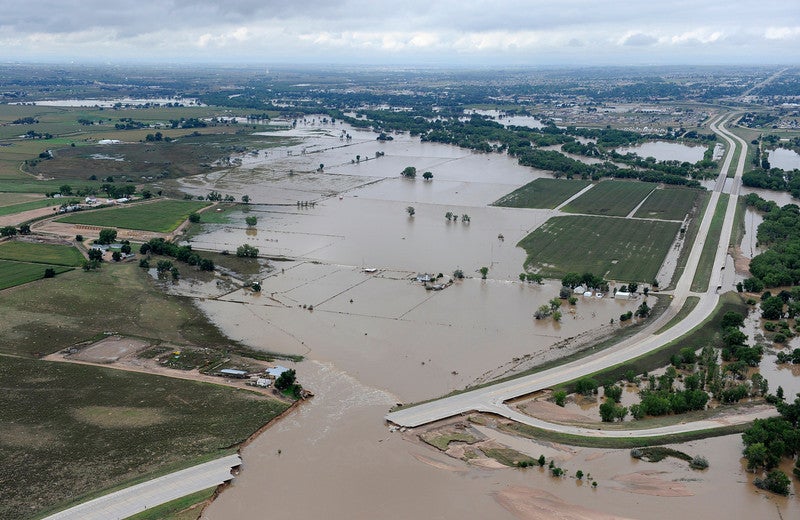More Americans are at risk of flooding than ever before. Here’s how to address this new reality.
Imagine going to bed thinking your home is safe only to wake up and discover that you’re living in the middle of a vulnerable flood zone.
That’s essentially what happened to millions of Americans recently when the research and technology nonprofit First Street Foundation released a report showing how much damage climate-induced flooding could inflict on homes and businesses in the next 30 years.
Unlike current federal flood-risk maps, which identify 8.6 million properties at risk, First Street’s data show that 21.8 million homes and businesses are in harm’s way, a difference of about 67%. Further, First Street estimates that an additional 1.7 million properties will be at risk of flooding by 2050, with significant spikes in places as varied as New Orleans, Jacksonville, Virginia Beach, Cleveland, San Diego and New York City.
Talk about a wake-up call. Here are three ways we can get ahead of the threat and build resilient communities.
1. Update flood maps to accurately reflect risk
My colleagues at Environmental Defense Fund and I have long called on the Federal Emergency Management Agency (FEMA) to update their flood maps. Instead, FEMA’s 2021 budget request slashed funding for flood hazard mapping despite 58% of their maps being outdated or inaccurate. Even worse, they only consider current flood risk when we know climate change will increase risk dramatically.
Congress should pass the Flood Mapping Modernization and Homeowner Empowerment Pilot Program Act to establish an enhanced mapping program to better equip people for the future.
States and local governments, including New Jersey, Louisiana and Virginia, have done this successfully through interactive tools and resources that help property owners understand and manage flood risks, including from future sea level rise.

2. Use nature to limit flooding for river and coastal communities
Natural infrastructure can better protect the 41 million Americans living in coastal or river floodplains. On our coasts, barrier islands and marshes buffer storm surge and sea level rise. Further inland, restoring natural floodplains and wetlands gives rivers room to flow and limit flooding. Within cities, water gardens direct rainfall to greenspaces rather than to homes.
Congress can build resilience and grow the economy by investing in these solutions. There are a number of bipartisan bills that would move these priorities forward including the Natural Infrastructure and Resilience Act and the Resilience Revolving Loan Fund Act of 2019. Recently, the U.S. House of Representatives passed the Moving Forward Act, which includes a number of these bipartisan bills.
3. Build flood resilience through effective planning, policies and community engagement
The Trump Administration rescinded the Federal Flood Risk Management Standard (FFRMS), which has bipartisan support and required structures built with federal dollars in or near floodplains be able to withstand climate-induced flooding.
Nonetheless, states are making progress through science-based, publicly informed resilience plans. New Jersey, North Carolina, Virginia, Rhode Island, Oregon and Florida have all hired chief resilience officers. North Carolina released its first resilience plan last month, with plans from Virginia and New Jersey expected soon. Louisiana’s Legislature unanimously approved a plan to fund $1 billion annually over the next three years on coastal restoration and protection. Policymakers must provide comprehensive and accurate representations of flood risks now, so people can be empowered to act before the next flood. Share on X
States and municipalities can leverage the Community Rating System — a voluntary, incentive-based program administered by FEMA that rewards local floodplain management activities that go beyond the minimum standards of the National Flood Insurance Program (NFIP). The system provides a framework and technical resources so communities can implement plans to reduce and avoid flood losses. As an incentive, participants receive community-wide discounts for NFIP policyholders.
To do this right, government official must work with people. The solutions must start with those whose lives are directly impacted. Louisiana’s Strategic Adaptation for Future Environments put community members in the driver’s seat. With access to data and open dialogues about needs, communities designed resilience projects that are now being implemented. One neighborhood chose to relocate after understanding their risk.
We need federal action, now
The federal government must provide comprehensive and accurate representations of flood risks now, so people can be empowered to act before the next flood. Congress must fund priorities, like natural infrastructure, and other resilience plans and projects to keep people safe.










